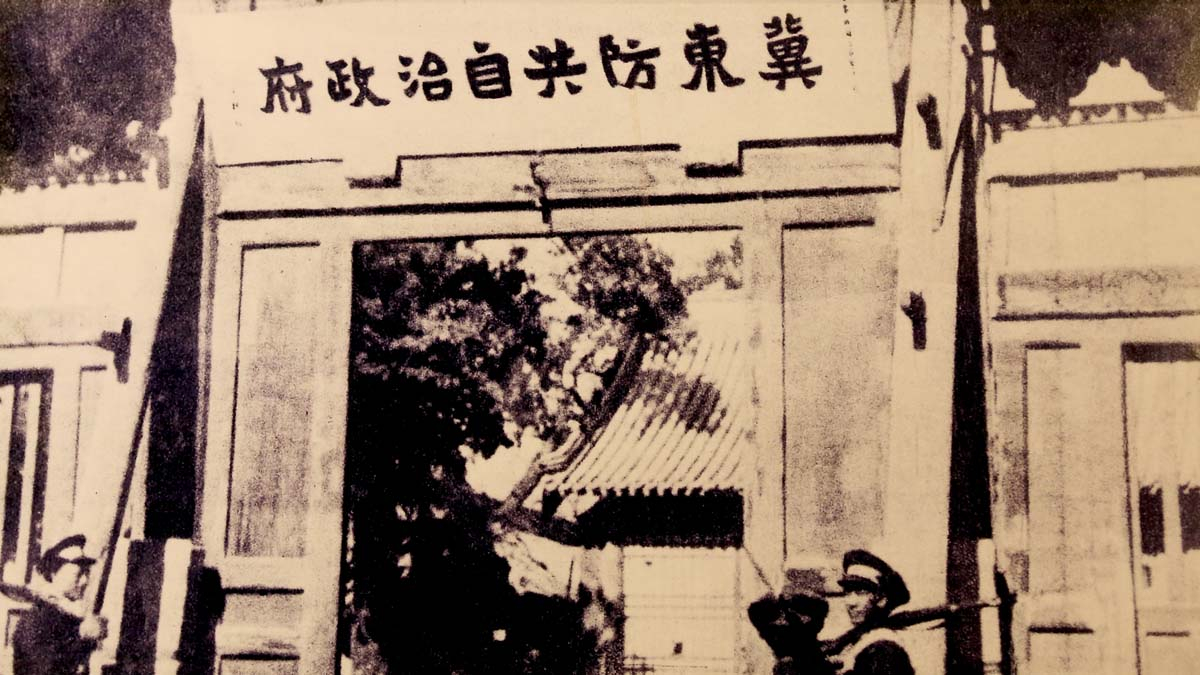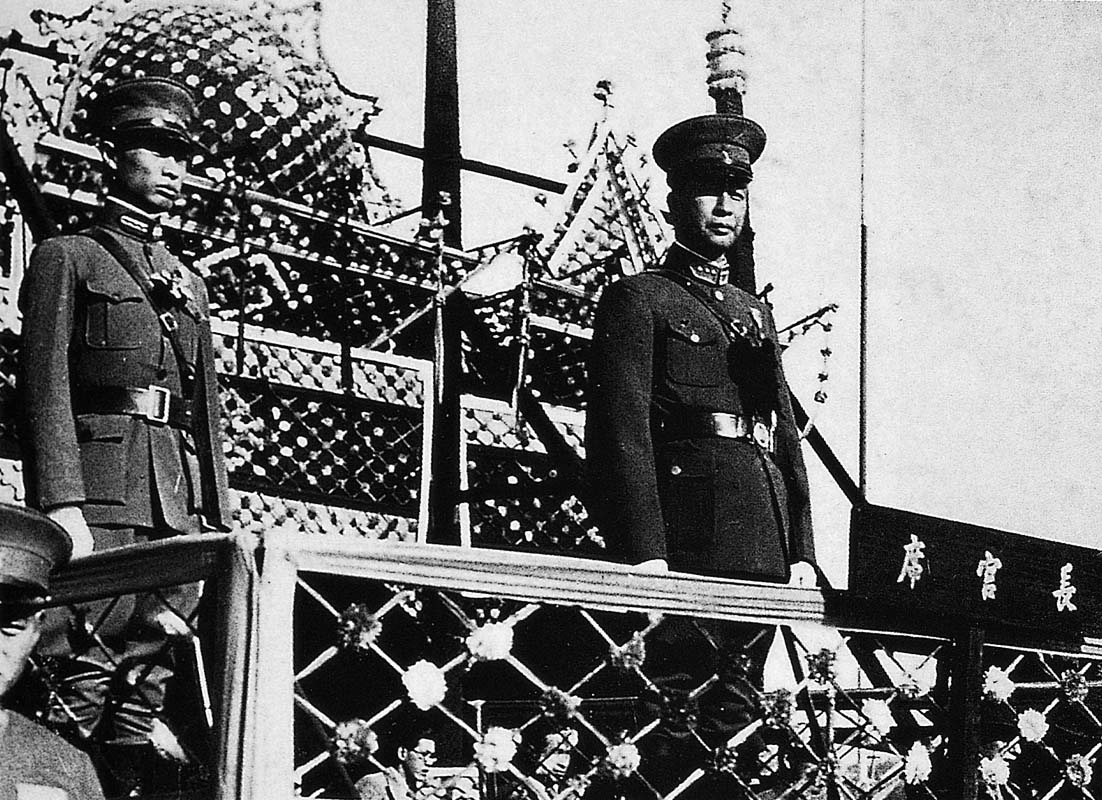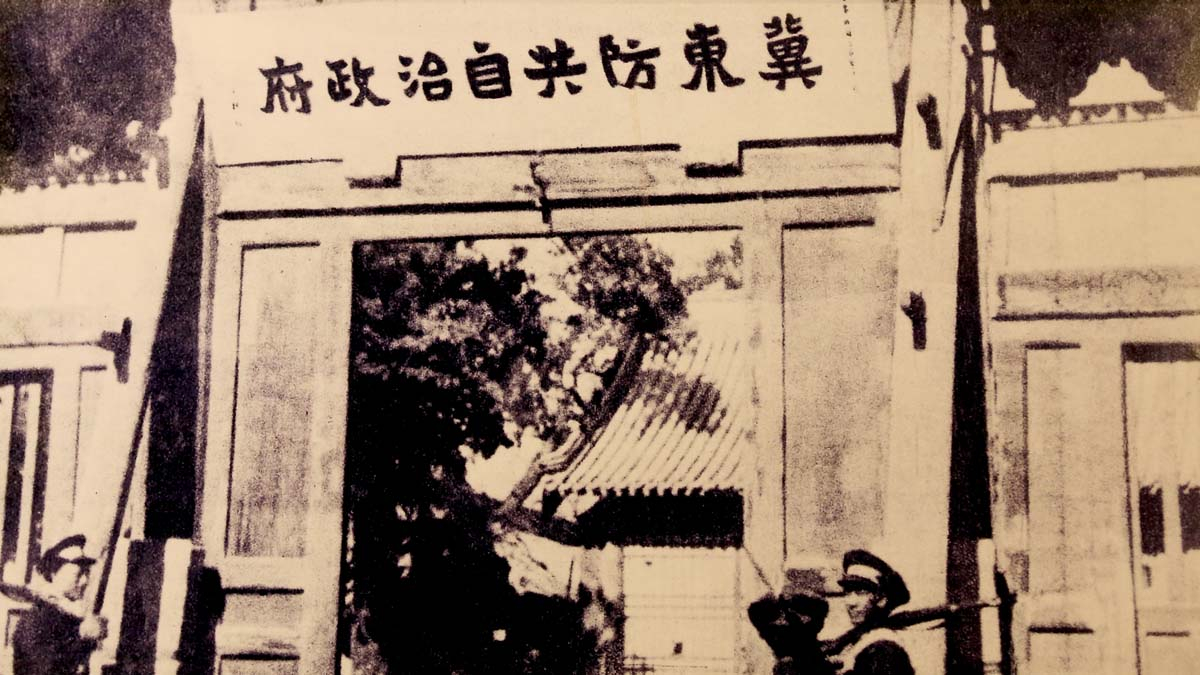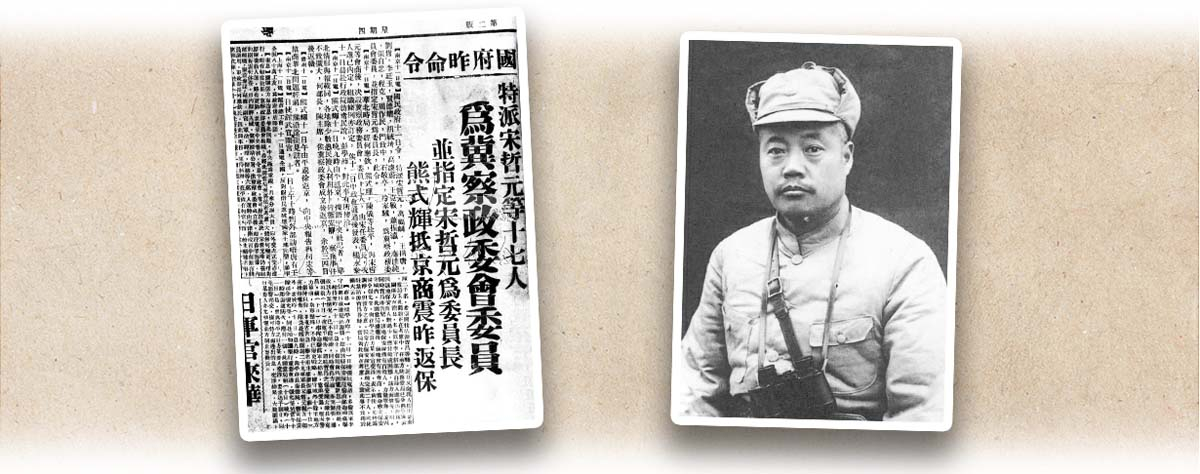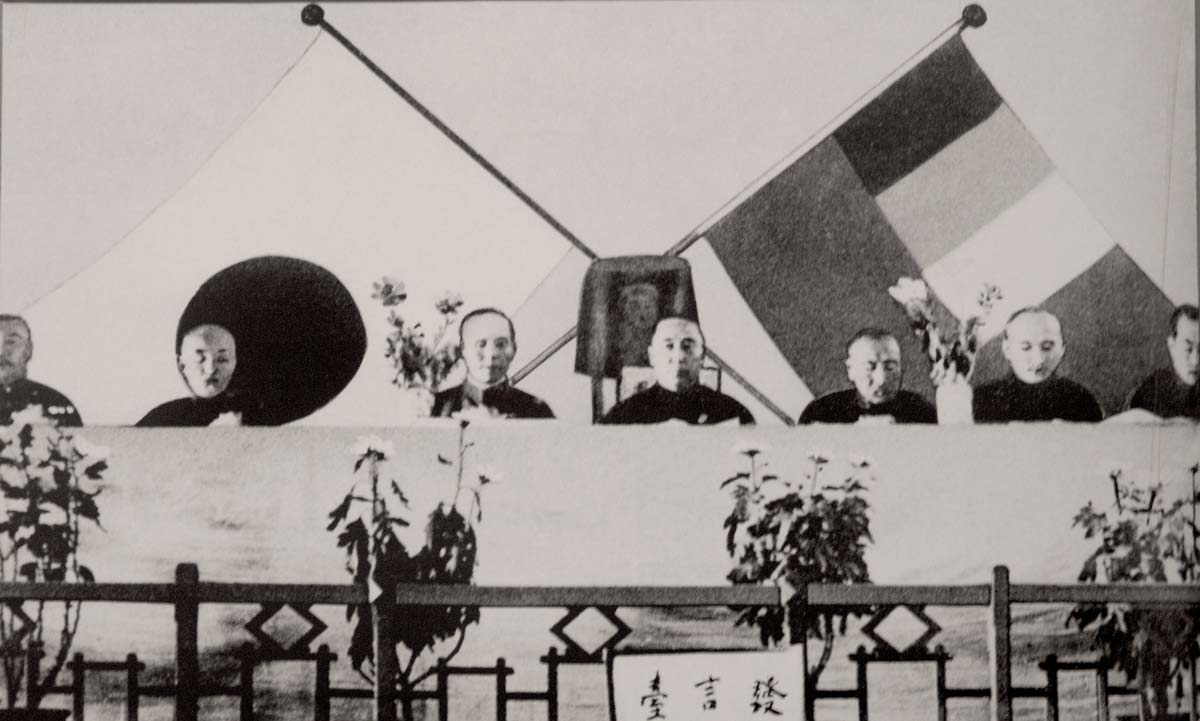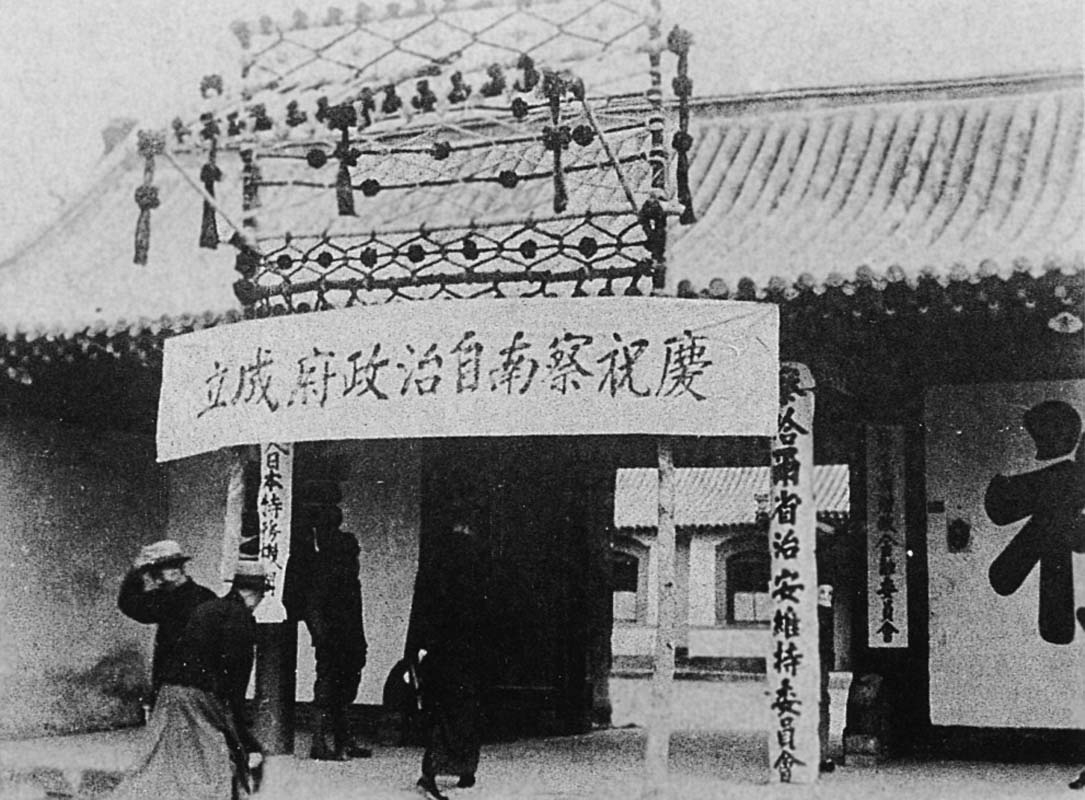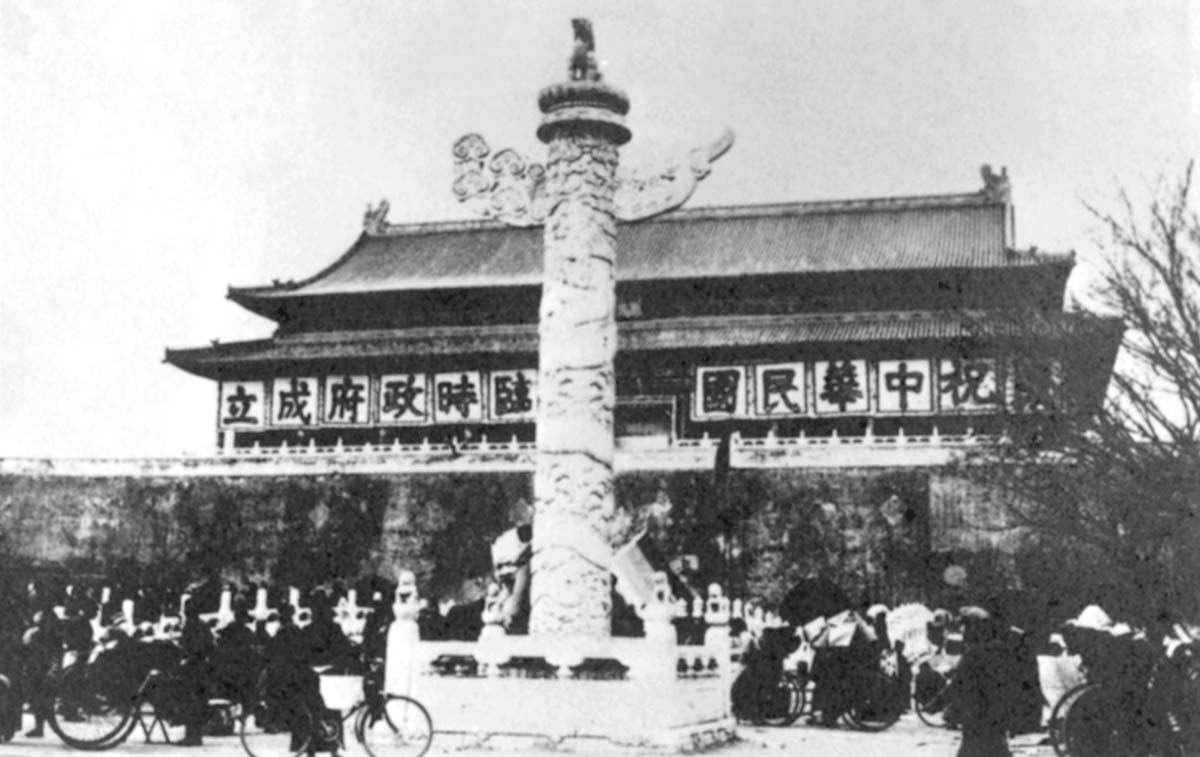Japan had set a plan to invade China. Instead of forcing its way in, Japan chose to encroach the vast land little by little. Soon after the negotiations of the He-Umezu Agreement (「何梅協定」), Japan plotted a coup in the eastern part of Hebei Province (河北) and initiated the so-called North China Autonomous Movement. On 24 November 1935, Yin Rugeng (殷汝耕), a former important official of the Kuomintang of China (KMT, 中國國民黨), set up the East Hebei Anti-Communist Autonomous Council in Tongzhou (通州) under the support of Japan and declared independence from the Nationalist Government. A month later, it changed to the East Hebei Autonomous Government (1935-38), with the capital later relocated from Tongzhou to Tangshan (唐山) and the leader succeeded by Chi Zongmo (池宗墨). This government was Japan’s second puppet regime after the puppet state of Manchukuo (偽滿洲國). The series of events was called the East Hebei Incident (冀東事變). In 1938, the East Hebei Autonomous Government was incorporated into the so-called Provisional Government of the Republic of China (1937-40) established in Beiping (北平) by another Japanese puppet named Wang Kemin (王克敏).
The East Hebei Incident and the establishment of the East Hebei Autonomous Government were Japan’s first step to advance the North China Autonomous Movement. The North China Autonomous Movement was also called the Specialisation of North China, the North China Buffer State Strategy, and the North China Incident. By promoting this operation, Japan targeted to detach five provinces of northern China - Hebei, Chahar (察哈爾), Suiyuan (綏遠), Shandong (山東), and Shanxi (山西) - from China. In February 1936, Hebei and Chahar were put under partial autonomy and the Mongol Military Government was set up in Chahar. On 11 December, the Nationalist Government established the Hebei-Chahar Political Council headed by Song Zheyuan (宋哲元), which temporarily delayed the development of the North China Incident, However, Japan was virtually controlling North China. After the July 7th Incident, it further accelerated the establishment of puppet regimes in China.
|
|
Japan used to adopt the strategy of using Chinese to subdue Chinese during its invasion of China. What puppet regimes did it establish in China after 1931? |
|
|
See answer below. |
On 24 November 1935, Yin Rugeng, supported by Japan, set up the East Hebei Anti-Communist Autonomous Council and declared independence from the Nationalist Government. The photo shows Yin standing at the leader’s seat as the Council was established.
A month after its establishment, the East Hebei Anti-Communist Autonomous Council, was renamed the East Hebei Autonomous Government on 25 December 1935. This was the second puppet regime installed by Japan in China after the puppet state of Manchukuo. The photo shows the gate of the East Hebei Autonomous Government. In 1938, this government was incorporated into the Provisional Government of the Republic of China headed by Wang Kemin.
The map displaying Chahar, Rehe (熱河), and Suiyuan published during the Republican period. The three provinces, together with Hebei, Shandong, and Shanxi, all belong to North China. After Japanese occupation in 1933, Rehe was merged into the puppet state of Manchukuo.
A photo taken in Suiyuan County, Suiyuan, during 1932-33. Slogans such as “Never forget the national shame and take revenge” can be seen written on the wall. In the mid-1930s, Japan vigorously instigated the North China Autonomous Movement, with Suiyuan included.
After the September 18 Incident and the Defence of the Great Wall, many anti-Japanese armed forces appeared in North China. On 26 May 1933, the Chahar People’s Anti-Japanese Army was founded in Zhangjiakou (張家口). The photo shows the cavalry of the Army rushing to the frontline of the resistance against Japanese aggression. In the mid-1930s, Japan vigorously instigated the North China Autonomous Movement, with Chahar included.
On 11 December 1935, the Nationalist Government established the Hebei-Chahar Political Council headed by Song Zheyuan, which delayed the North China Autonomous Movement staged by Japan. Left: a newspaper report on the Nationalist Government’s establishment of the Hebei-Chahar Political Council. Right: Song, the Chairman of the Council cum Commander of the 29th Corps. His 29th Corps was the main force in the Defence of the Great Wall in 1933.
After the establishment of the Hebei-Chahar Political Council, Japan continued to promote the North China Autonomous Movement and established puppet regimes in North China. The photo shows the rostrum of the first Mongolian Congress in April 1936, at which the founding of the Mongol Military Government was discussed and decided upon. The flags of Japan and the Mongol Military Government can be seen behind the rostrum. The Mongol Military Government controlled by Japan was formally established in Chahar in the following month.
After the July 7th Incident, Japan accelerated the establishment of puppet regimes in North China. On 4 September 1937, Japan established the Southern Chahar Autonomous Government in Chahar.
On 15 October 1937, Japan established the Northern Shanxi Autonomous Government in Shanxi. The photo shows the founding congress of the puppet regime.
On 14 December 1937, Japan established the Provisional Government of the Republic of China headed by Wang Kemin in Beiping. In the photo, the slogan “Celebrating the Founding of the Provisional Government of the Republic of China” can be seen hanging on the Tiananmen (天安門) Gate Tower.
|
|
Japan used to adopt the strategy of using Chinese to subdue Chinese during its invasion of China. What puppet regimes did it establish in China after 1931? |
|
|
During its invasion of China, Japan used to adopt the policy of using Chinese to subdue Chinese to install puppet regimes in many provinces. Here are some important examples: (1) The puppet state of Manchukuo was founded on 1 March 1932 after the September 18 Incident in 1931, with Aisin-Gioro Puyi (愛新覺羅‧溥儀), the last emperor of the Qing dynasty (清朝), as chief executive and Datong (大同) as his reign title. The regime set its capital in Hsinking (﹝新京﹞, now Changchun ﹝長春﹞, Jilin Province﹝吉林﹞) and administered Rehe and three other provinces in Northeast China - Liaoning (遼寧), Jilin (吉林), and Heilongjiang (黑龍江). On 1 March 1934, it was renamed the Empire of Manchuria (大滿洲帝國) and Puyi was crowned adopting the reign title Kangde (康德). The regime fell on 18 August 1945. (2) The puppet East Hebei Autonomous Government was founded during the East Hebei Incident in November and December 1935. Its predecessor was the East Hebei Anti-Communist Autonomous Council set up in Tongzhou on 24 November 1935, with Yin Rugeng as chairman. The Council was renamed the East Hebei Autonomous Government on 25 December 1935, with Yin as administrative commissioner. In August 1937, the Government moved its capital to Tangshan, with Chi Zongmo taking the position as administrative commissioner. On 1 February 1938, the East Hebei Autonomous Government was abolished and incorporated into the puppet Provisional Government of the Republic of China in Beiping. (3) The puppet Provisional Government of the Republic of China was founded in Beiping on 14 December 1937, with Wang Kemin as chairman of the Administrative Committee. After Wang Jingwei (汪精衛) established the Reorganised National Government of the Republic of China in Nanjing (南京) in 1940, the Provisional Government of the Republic of China was dissolved and changed into the North China Political Council, with Wang Yitang (王揖唐) as its chairman. It was put under the direct control of Japan. (4) The puppet Government of the Republic of China was founded in Nanjing on 30 March 1940 (Japan captured Nanjing in December 1937), with Wang Jingwei as acting chairman of the Reorganised National Government cum president of the Executive Yuan (行政院) under it. Chen Gongbo (陳公博) succeeded Wang as acting chairman cum president of the Executive Yuan after Wang died in November 1944. The Government was dissolved after Japan surrendered on 16 August 1945. Other Japanese puppet regimes include the Reformed Government of the Republic of China, the Mongol-Xinjiang (蒙疆) United Autonomous Government, the Mongol Military Government, the Southern Chahar Autonomous Government, and the Northern Shanxi Autonomous Government, to name a few. |
Source of most photos used in this feature piece: Fotoe (pictures 1-5, and pictures 7-10) and misc. photo sources.




